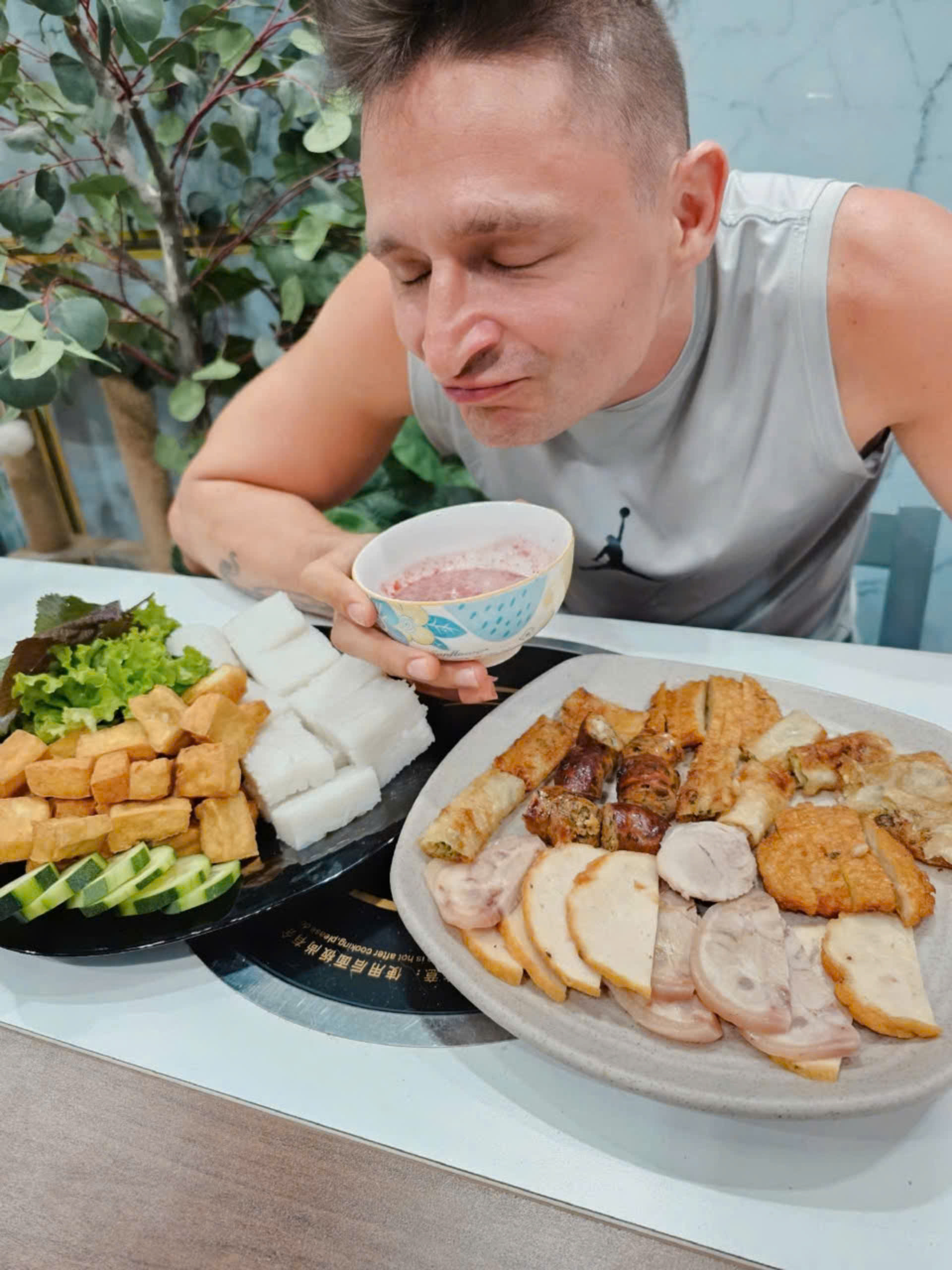
Asked ‘da co con chua?’ (Do you have children?), Valentin Constantinescu said ‘co 8 con’ (I have 8 animals), and explained ‘six dogs and 2 cats’.
In Vietnamese, ‘con’ is a homonym. ‘Con’ means ‘kid’ or ‘child’. Also, ‘con’ denotes a unit of animal or animal-like thing. So, in the question, ‘con’ bears the first meaning, while in the answer, ‘con’ means the number of animals.
The witty answer showed his Vietnamese proficiency. However, the man born in 1985 said his Vietnamese skills are just average. His wife said he has been living in Vietnam for more than 20 years, even longer than the time he was in Romania, his homeland.
Vietnamese language
Valentin met for an interview when he was on a trans-Viet grip and was staying in Da Nang. The trip lasted 1.5 years and the team of travelers included him, his wife and some dogs.
Having living for 14 years in Hanoi, five years in HCM City and 1.5 years of traveling between the north and south, he said "nothing in Vietnam can surprise me anymore" except the knowledge about Vietnamese language he receives every day.
In 2004, Valentin arrived in Vietnam for the first time as a student with a scholarship granted by the Institute for International Relations, which later was renamed the Diplomatic Academy of Vietnam. After one year of studying Vietnamese at the Hanoi University of Science and Technology (HUST), he officially began university study.
“When I began following university curriculum, my Vietnamese skills were just enough for basic communication and not sufficient enough to receive all the knowledge in difficult subjects such as politics, macro economy and philosophy. But my Vietnamese step by step became better,” he recalled.
And now he can speak Vietnamese so fluently that it can cause funny situations.
Some years ago, Grab still did not have a good positioning system as seen now. Therefore, after booking a taxi, taxi drivers always had to call passengers to ask about the exact addresses.
“One day, I booked a taxi and received a call from a female driver who asked my exact location. When she came to the place, she felt embarrassed when seeing me and made a gesture with the hand to say ‘no, no, customer… customer’ in English,” Valentin recalled.
“Then I said to her ‘em la khach cua chi day’ (I am your client). But she still refused and tried to express in English ‘I don’t speak English’. And I said ‘OK, em biet roi. Em noi tieng Viet ma’ (OK, I know. I can speak Vietnamese). But she still thought that she found a wrong passenger."
Only after a lot of explanations did she realize that the foreign man speaking Vietnamese was really her client.

“She could not imagine that a foreigner could speak Vietnamese so fluently,” Valentin said.
Teaching Vietnamese to foreigners
As a teacher of English, Valentin said as he is fluent in Vietnamese and can explain to leaners in Vietnamese for better understanding.
He plans to teach Vietnamese to foreigners in Vietnam in the time to come. Having experience in learning foreign languages, he believes there are many textbooks for teaching Vietnamese to foreigners, but the lessons are not that good.
“For example, this conversation is found in many textbooks. “Chao ban. Ban khoe khong?” (Hello, are you okay?). Vietnamese don’t say this when meeting each other daily. The sentence pattern is only used for those who don’t see each other for a long time, or used to greet old people,” he said.
Valentin wants to teach Vietnamese in the most understandable and natural way.
Vietnam is second homeland
Vietnam is a long strip of land, so the cities and provinces in Vietnam are different, from accent to food to habits. However, there is one common trait – Vietnamese people are generally optimistic and friendly.
Asked which dishes he likes the most, Valentin said he has a passion for Vietnamese dishes.
“There are only two dishes I dislike – sau rieng (durian) and tiet canh (blood pudding), but I like all the other dishes, including bun dau mam tom (tofu, shrimp sauce, and noodles),” he said.
Nguyen Thao